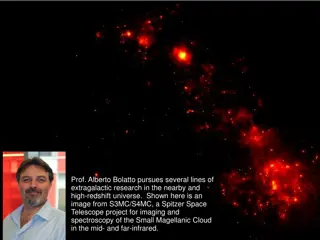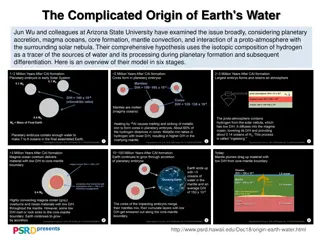The Fascinating Story of Pluto: Discovery, Naming, and Its Planetary Status
In 2006, Pluto was reclassified as a dwarf planet, sparking debates about its planetary status. Discovered in 1930 by Clyde Tombaugh, Pluto was named after the Roman god of the underworld by an 11-year-old girl. Its composition and size differentiate it from the traditional outer planets, contributing to its controversial status in the solar system.
Download Presentation

Please find below an Image/Link to download the presentation.
The content on the website is provided AS IS for your information and personal use only. It may not be sold, licensed, or shared on other websites without obtaining consent from the author. Download presentation by click this link. If you encounter any issues during the download, it is possible that the publisher has removed the file from their server.
E N D
Presentation Transcript
Pluto THE DWARF PLANET
What happened to Pluto? In 2006, Scientists decided that Pluto was no longer one of the 9 planets. Pluto has a different shaped orbit than the other 8 planets. It goes into Neptune s orbit and stays there for 20 years. This happens every 248 years.
Pluto: A True Outer Planet or Not? Pluto is NOT a true planet because: 1) Pluto is composed of rock and metal (similar to inner planets) and not made of hydrogen and helium like the outer planets. 2) Pluto doesn t have a ring like the other 4 outer planets. 3) Pluto is too small.
Naming Pluto The name Pluto was suggested by Venetia Burney of England, who was 11 years old at the time. She suggested the name to her grandfather, who was Librarian at Oxford. He passed her idea to the astronomers who were trying to name the newly-discovered planet. It is named after the Roman God of the Underworld, Hades.
Discovery Pluto was discovered in 1930 by an astronomer named Clyde Tambaugh in Flagstaff, Arizona in the Lowell Observatory.

















































